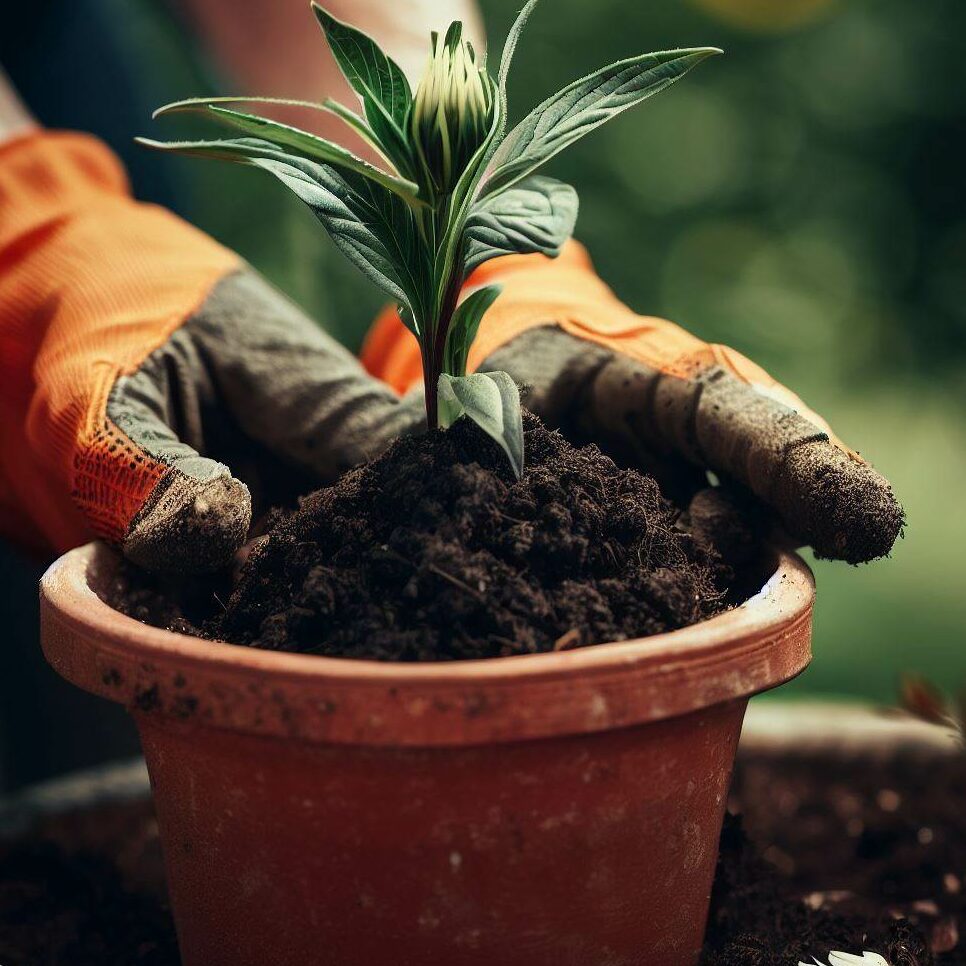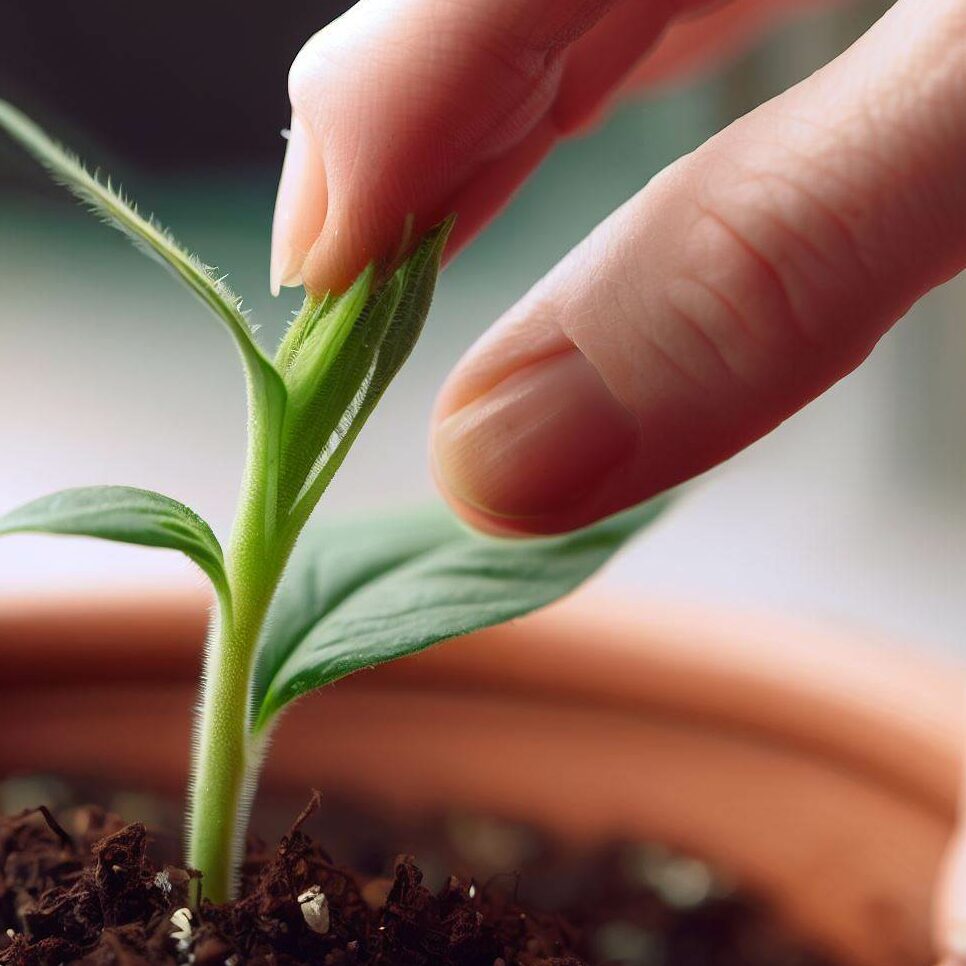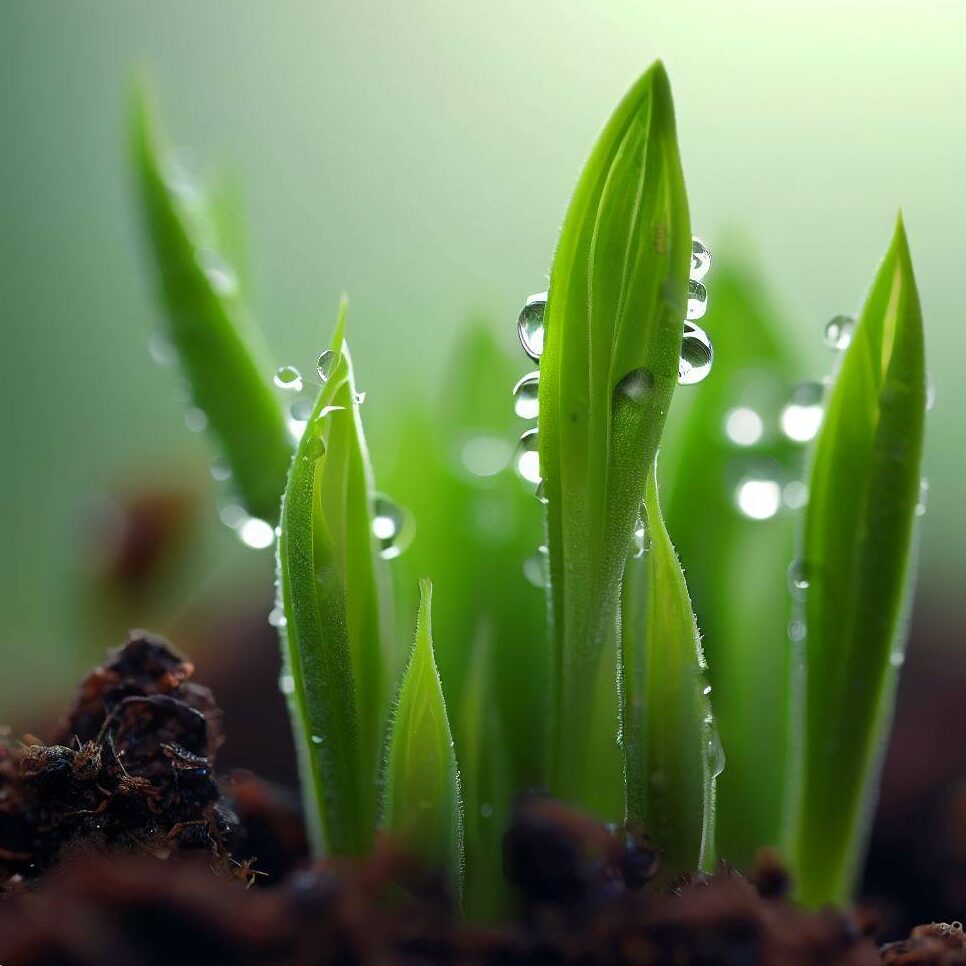Coneflowers have long held a cherished spot in gardens worldwide. These perennial beauties, scientifically known as Echinacea, not only add aesthetic appeal but also possess medicinal properties, making them a dual-purpose gem in the horticultural world.
But can you propogate coneflowers from cuttings? The short answer is absolutely! This method allows gardeners to produce plants that are genetically identical to the parent plant. By taking a healthy stem cutting, preferably without a flower, and following a series of steps including trimming, potting in a suitable medium, and maintaining optimal moisture levels, one can successfully grow new coneflower plants. This propagation technique is both efficient and rewarding for gardening enthusiasts.

The Significance of Coneflowers in Gardening
- Known for their resilience, coneflowers thrive in various conditions, making them a favorite among both novice and seasoned gardeners.
- They attract pollinators, playing a pivotal role in maintaining a garden’s ecological balance.
- Coneflowers are drought-tolerant, making them an eco-friendly choice for sustainable gardening.
Delving into Propagation
Propagation, in its essence, is the act of producing new plants. While there are multiple methods to propagate plants, doing so from cuttings offers a unique advantage: the new plants are genetically identical to the parent, ensuring consistency in growth and characteristics.
🌸 Coneflower Clue: Propagation not only multiplies your plant collection but also offers a cost-effective way to replenish your garden. 🌸
With coneflowers, propagation from cuttings can be a rewarding experience, allowing garden enthusiasts to witness the magic of growth from a mere stem segment to a flourishing plant.
Understanding Coneflowers and Echinacea
In the vast realm of gardening, certain terms often intertwine, leading to a web of confusion for enthusiasts. Two such terms that frequently cross paths are “Coneflowers” and “Echinacea”. Let’s unravel this botanical mystery.
Defining the Terms
- Coneflowers: These are flowering plants characterized by their daisy-like appearance with raised central cones. They’re celebrated for their resilience and vibrant hues, ranging from purples to yellows.
- Echinacea: This is the scientific name for a genus of herbaceous flowering plants in the daisy family. The term is often synonymous with medicinal properties, especially in boosting immune health.
Are Echinacea and Coneflower the Same Thing?
Yes, in essence, they are. Echinacea is the genus name, while coneflower is the common name for these plants. All coneflowers belong to the Echinacea genus, making them essentially two sides of the same coin.
🌸 Coneflower Clue: While all coneflowers are Echinacea, not all Echinacea varieties look the same. Some might have a different petal structure or color, adding diversity to this plant family. 🌸
So, the next time you’re admiring a coneflower or considering an Echinacea supplement, remember the intertwined relationship of these terms and the rich history they carry in both gardening and health spheres.

Methods of Propagating Coneflowers
Coneflowers, with their radiant allure, often inspire gardeners to multiply their presence. Propagation, the art of producing new plants, offers several avenues to achieve this. Let’s delve into the primary methods and understand their nuances.
Primary Propagation Methods
- Seed: A natural method where coneflowers are grown from seeds. It’s a game of patience, awaiting the sprouting of new plants.
- Division: This involves separating mature plants into smaller sections, each with its roots, and replanting them.
- Cuttings: Here, a segment of the plant, typically a stem, is placed in a conducive environment to develop roots and grow.
The Cutting Edge of Propagation
Among these methods, propagation from cuttings stands out for its precision. It ensures the offspring is genetically identical to the parent, preserving desired traits. This method is especially favored for its predictability and efficiency.
🌸 Coneflower Clue: Propagating from cuttings can be a quicker route to mature plants compared to seeds, giving gardeners a head start in the growing season. 🌸
Step-by-Step Guide to Propagate Coneflowers from Cuttings
Propagating coneflowers, especially the enchanting echinacea pallida or pale purple coneflower, can be a rewarding experience. By following a meticulous process, gardeners can ensure a garden filled with these captivating blooms. Let’s embark on this journey, step by step.
1. Selection of a Healthy Coneflower Plant
Begin in the late autumn or early winter, when the plant is dormant. This timing ensures optimal conditions for successful propagation.
2. Identify the Right Stem
Choose a stem without a flower, ensuring it has at least three pairs of leaves. This ensures the cutting has enough energy reserves to root successfully.
3. Precise Trimming
Using clean and sharp secateurs, trim the echinacea stem cutting to about 3 inches. This length is ideal for promoting root growth.
4. Preparing the Rooting Pot
Mix 3 parts coarse sand with 2 parts milled peat. This mixture provides the right balance of drainage and moisture retention for the cuttings.
🌸 Coneflower Clue: Ensure your sand is free from contaminants. Sterilized sand can be a good choice. 🌸
5. Moistening the Mixture
Saturate your sand and peat mixture with water. Allow it to drain for 20 to 30 minutes, ensuring it’s moist but not waterlogged.
6. Planting the Cutting
Create a hole in the moistened mixture. Place the basal stem cutting in the hole, ensuring the base of the stem is level with the surface. Gently tamp the sand around the cutting to secure it.

7. Labeling
It’s easy to forget details over time. Label your pot with the date and type of plant to keep track of your propagation journey.
8. Choosing the Right Spot
Place your pot in a warm, sheltered location. This environment promotes root growth and protects the cutting from harsh conditions.
9. Maintenance
Keep the soil consistently moist, but be cautious to avoid overwatering. A waterlogged environment can lead to rotting.
10. Patience is Key
After about six weeks, you’ll witness the magic of nature as new shoots emerge. Celebrate this milestone and continue nurturing your young coneflowers until they’re ready for transplantation.
🌸 Coneflower Clue: If the season isn’t right for outdoor planting, consider transferring your coneflowers to a 6-inch pot for further growth. 🌸
With dedication and a touch of patience, you’ll soon have a garden graced by the beauty of coneflowers, all thanks to the wonders of propagation.
Common Questions about Coneflower Propagation
Gardening is a journey of discovery, and as with any journey, questions arise. Let’s delve into some of the most frequently asked questions about coneflower propagation.
Can you grow coneflowers from cuttings?
Yes, absolutely! Coneflowers can be successfully propagated from cuttings. This method allows gardeners to produce plants that are genetically identical to the parent plant, ensuring consistency in your garden’s display.
🌸 Coneflower Clue: Late autumn or early winter is the ideal time to take cuttings, during the plant’s dormant phase. 🌸
When should you divide coneflowers?
Dividing coneflowers is best done in the spring or early fall. This gives the plants ample time to establish themselves before the extreme temperatures of summer or winter.
What is the best way to propagate coneflowers?
While coneflowers can be propagated through seeds, division, and cuttings, the cutting method is often favored for its efficiency and the ability to replicate the parent plant’s traits. However, the best method can vary based on individual preferences and garden conditions.
🌸 Coneflower Clue: Using a rooting hormone can increase the success rate of cuttings. 🌸
Can you root flower cuttings in water?
Yes, many flower cuttings, including coneflowers, can be rooted in water. However, it’s essential to transfer them to soil once roots develop to ensure they receive the necessary nutrients for growth.

Are coneflowers hard to transplant?
Coneflowers are relatively easy to transplant, especially when they’re young. It’s crucial to water them well before and after the transplanting process and to ensure they’re placed in a location with similar light and soil conditions.
🌸 Coneflower Clue: Transplant on a cloudy day or during the cooler parts of the day to reduce transplant shock. 🌸
With the right knowledge and a sprinkle of patience, coneflower propagation can be a delightful and rewarding gardening endeavor.
Benefits of Propagating Coneflowers from Cuttings
The art of propagation is a gardener’s secret weapon, and when it comes to coneflowers, taking the cutting route has its unique set of advantages. Let’s unearth the treasures of propagating echinacea from cuttings.
Advantages Over Other Methods
- Speed: Cuttings often root faster than seeds, giving you mature plants in a shorter time frame.
- Cost-Efficiency: Instead of purchasing new plants, cuttings allow you to multiply your existing plants for free.
- Success Rate: With the right conditions, cuttings can have a higher success rate compared to seeds, especially for certain coneflower varieties.
Genetic Consistency
One of the standout benefits of using cuttings is the genetic similarity between the mother plant and its offspring. This means that the new plants will mirror the traits of the parent, ensuring uniformity in color, size, and resilience.
🌸 Coneflower Clue: If you have a coneflower with a unique color or shape that you adore, propagation from cuttings is the way to ensure you get more of the same beauty! 🌸
In the world of gardening, knowledge is power. By understanding the benefits of propagation through cuttings, gardeners can make informed decisions that lead to flourishing gardens and bountiful blooms.
Potential Pitfalls and How to Avoid Them
While the journey of propagating coneflowers from cuttings is filled with the promise of lush blooms, it’s not without its challenges. But fear not, with a sprinkle of knowledge and a dash of care, you can sidestep these common pitfalls.
Common Mistakes in the Propagation Process
- Overwatering: Keeping the soil too wet can lead to root rot. Ensure the soil is moist but not waterlogged.
- Wrong Timing: Taking cuttings during the plant’s flowering period can reduce success rates. Late autumn or early winter is ideal.
- Not Enough Light: Cuttings need indirect sunlight to thrive. Avoid placing them in direct sunlight, which can scorch them.
🌸 Coneflower Clue: Always use sharp secateurs to take cuttings. Dull tools can damage the plant and hinder rooting. 🌸
Tips for Successful Growth
- Sanitize Equipment: Clean tools prevent the spread of diseases.
- Humidity Helps: A plastic cover or bag can create a mini greenhouse effect, promoting rooting.
- Patience is Key: Don’t be disheartened if you don’t see immediate results. Nature takes its time.
🌸 Coneflower Clue: If you’re new to propagation, consider starting with multiple cuttings. This increases your chances of success and allows for a few learning curves along the way. 🌸
With these insights in hand, you’re well on your way to mastering the art of coneflower propagation. Remember, every gardener learns through trial and error. Embrace the journey and watch your garden flourish!

Conclusion
As we come to the end of our gardening journey today, let’s take a moment to appreciate the vibrant beauty and versatility of coneflowers. These perennial favorites not only add a splash of color to our gardens but also embody the spirit of resilience and growth.
The Magic of Propagation
Propagation, especially through cuttings, is akin to capturing a moment in time. By using this method, we’re ensuring that the genetic essence of our beloved coneflower remains intact, allowing us to recreate its beauty in various corners of our garden. It’s a testament to nature’s incredible ability to regenerate and flourish.
🌸 Coneflower Clue: Remember, the joy of gardening isn’t just in the end result but in the process itself. Every leaf that sprouts, every root that takes hold, is a celebration of life. 🌸
Embrace the Gardening Adventure
For those of you who’ve been gardening for years, propagation might be an old friend. But for our budding garden enthusiasts, it’s an exciting new chapter waiting to be explored. I encourage each one of you to try propagating your coneflowers using the cutting method. The thrill of seeing a cutting transform into a full-fledged plant is unparalleled.
🌸 Coneflower Clue: Keep a gardening journal. Documenting your propagation journey, with notes and pictures, can be a rewarding experience and a handy reference for future endeavors. 🌸
As we part ways today, I invite you to share your propagation tales, the triumphs, and the learning curves. And if you’re ever in doubt or thirsting for more gardening wisdom, remember, this community is here to help. Let’s continue to grow together, one coneflower at a time.
